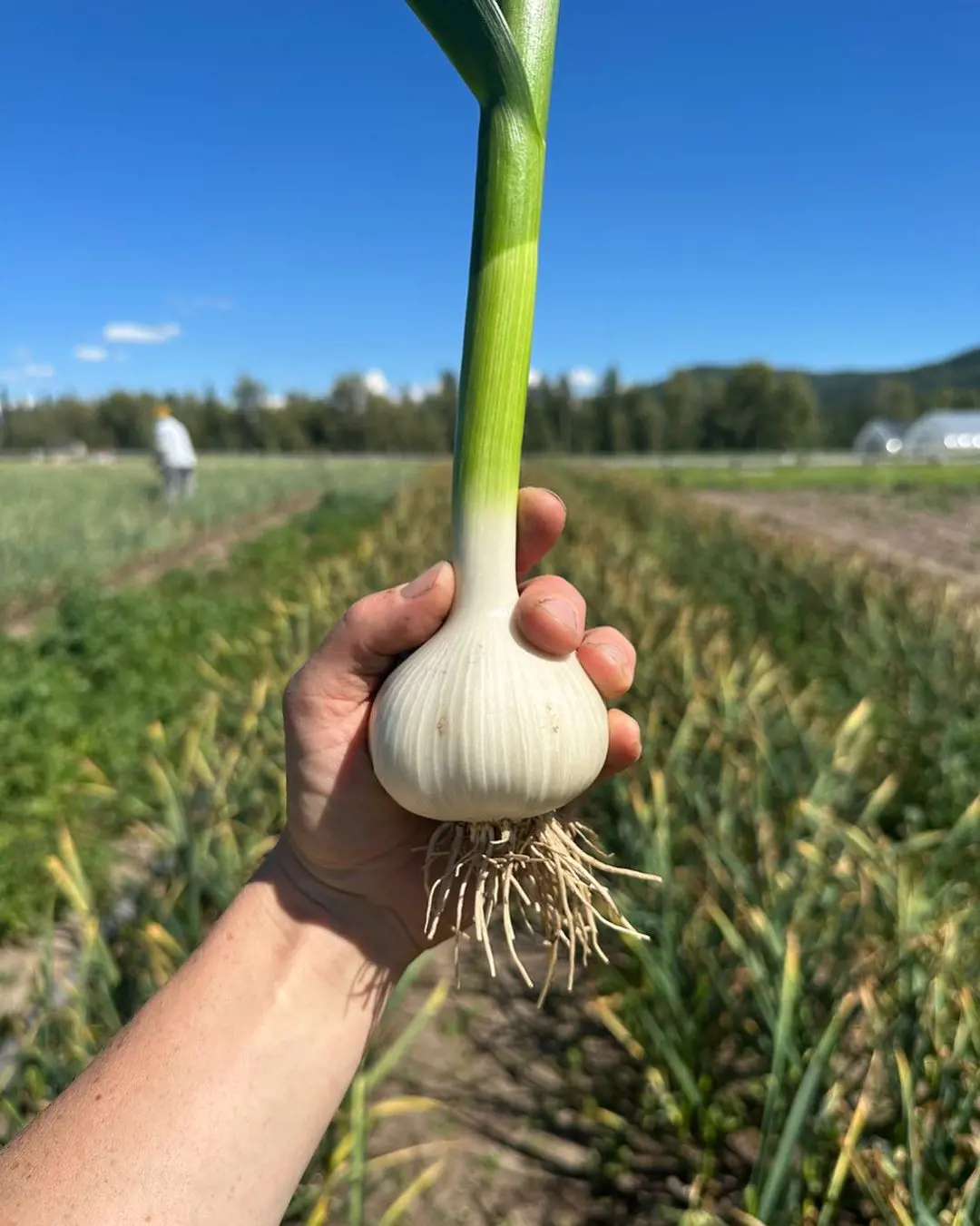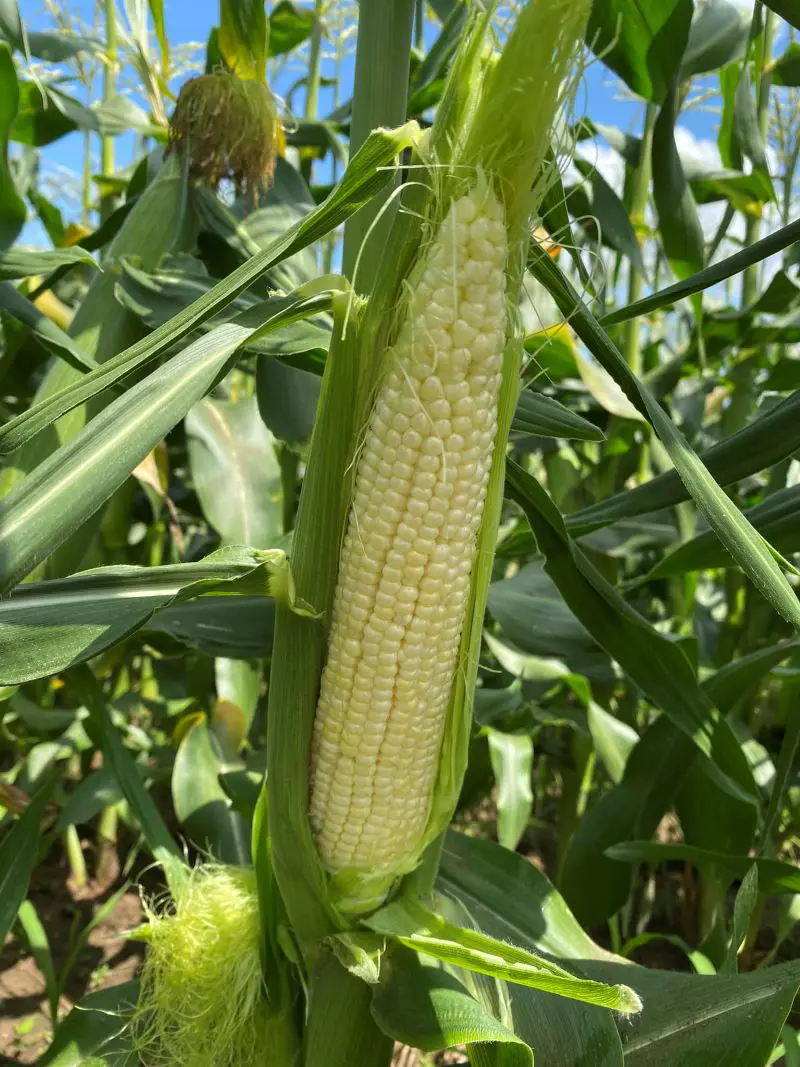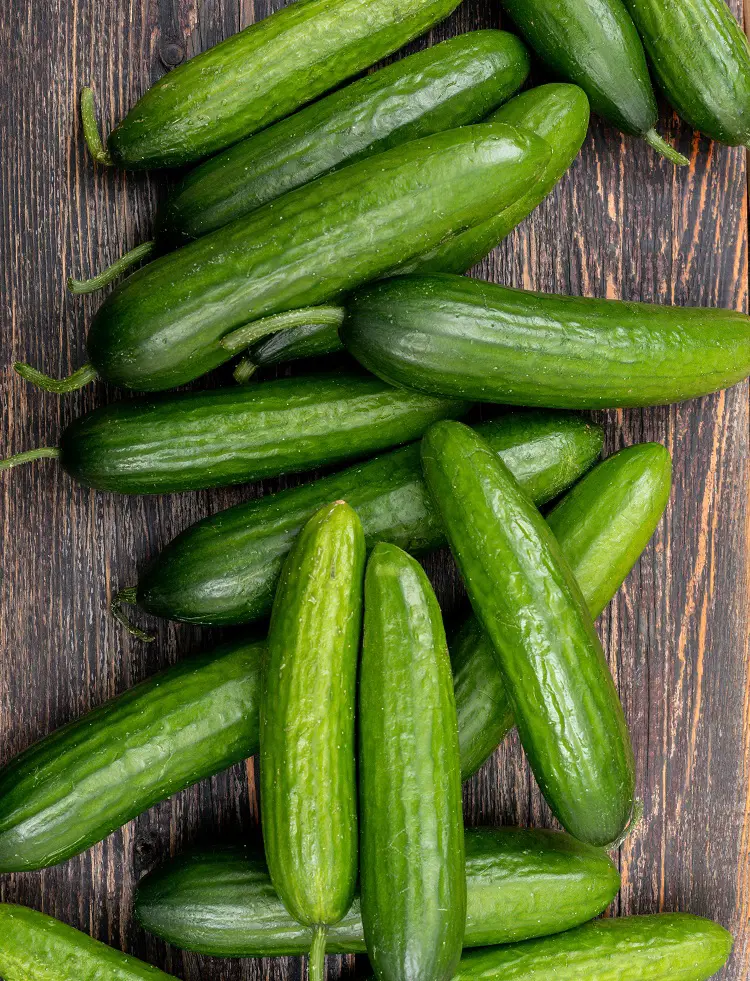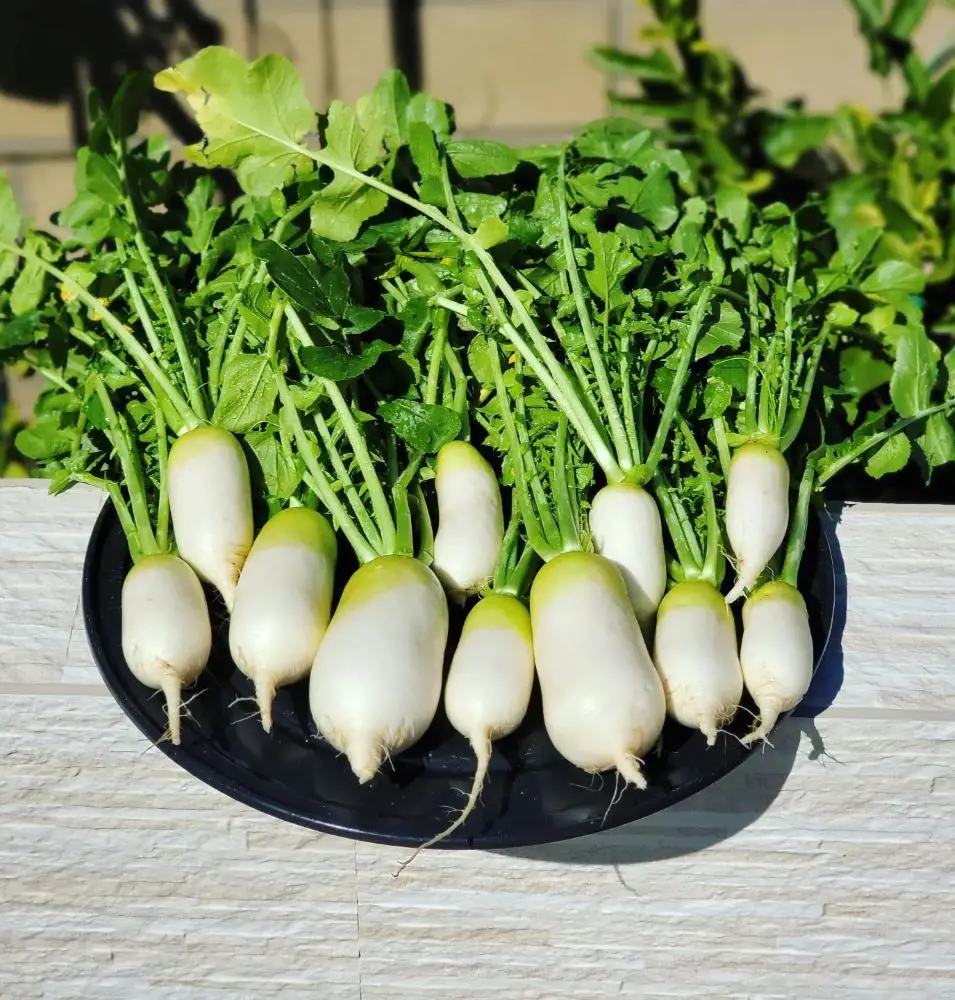Grow Avocado Tree From Seed With Various Steps

This post may contain affiliate links. If you make a purchase through links on our site, we may earn a commission.
The Avocado Tree is a perennial evergreen tree native to Mexico and Central America. The tree produces the avocado fruit, known for its creamy texture and high nutritional value.
Avocado trees flourish in warm climates and are cultivated for their fruits worldwide. Also, this tree is extremely low-maintenance; it typically requires minimal pruning and care. One advantage of growing the avocado is that the tree is self-pollinating, which eliminates the need for multiple trees for fruit production.
Explore this care and growing guide to learn more about the avocado tree.
How To Plant Avocado Tree
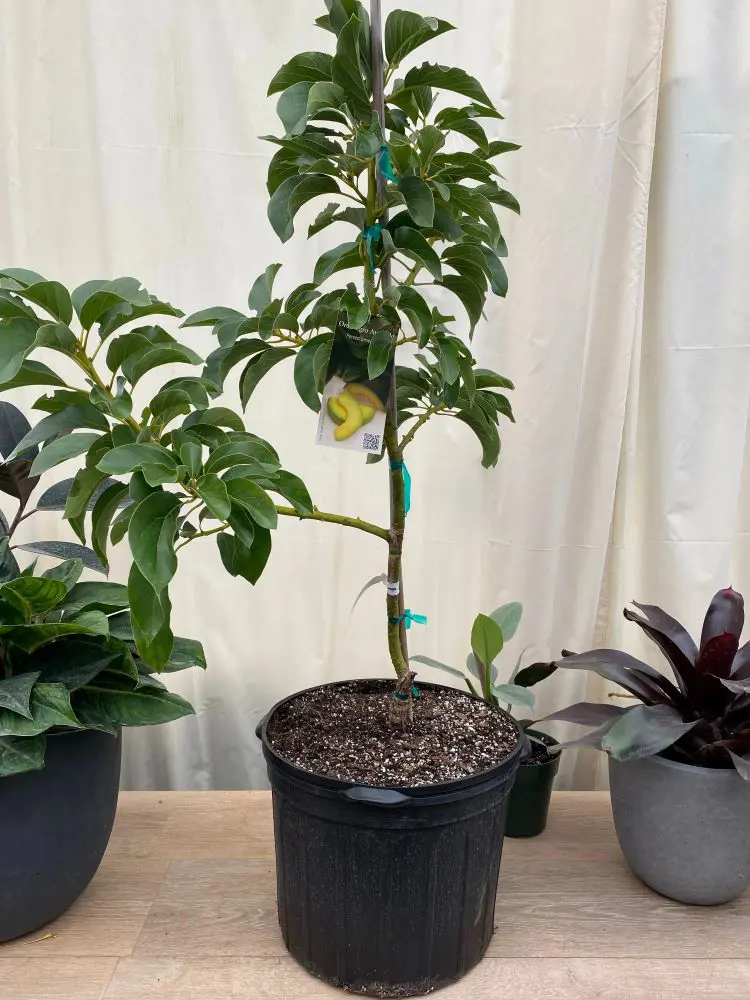
Planting an avocado tree requires some effort but isn't overly difficult. First time gardeners should focus on factors like the best place to plant, required depth, watering needs, and so on.
When To Plant
The best time to plant an avocado tree is in the spring when temperatures are consistently above 50°F (10°C). This allows the tree to establish its roots before the heat of summer arrives.
However, in warmer climates, planting can also be done in the fall. Avoid planting during the winter months or during periods of extreme heat as this can stress the tree.
Where To Plant
Avocado trees flourish in well-draining soil with a pH level between 6 and 7. Choose a spot in your garden with full sun exposure, sheltered from strong winds.
Additionally, ensure the location has enough space for the tree to grow as these trees can reach heights of 30 to 40 feet. Avoid areas prone to waterlogging or frost pockets, as this can damage the tree.
Depth, Support, And Spacing
When planting an avocado tree, ensure the hole is roughly twice the diameter of the root ball and of similar depth. Use stakes or trellises to support young trees in windy areas until they establish strong roots.
Moreover, space avocado trees 20 to 30 feet apart as they can grow quite large. Adequate spacing allows for proper air circulation and sunlight exposure, promoting healthy growth and fruit production.

Necessary Tools
These are the common tools you'll need to plant an avocado tree:
- Shovel or spade
- Garden rake
- Pruning shears or loppers
- Watering can or hose
- Mulch
- Stakes and ties
These tools will help ensure a successful planting process for your avocado tree.
Planting Process
The planting process for an avocado tree is quite easy. Simply, follow these steps:
- Choose the Right Variety: Select a suitable avocado variety based on your climate and space available.
- Prepare the Planting Site: Pick a sunny location with well-draining soil. Clear any weeds and debris from the area.
- Dig the Hole: Dig a hole twice as wide as the root ball and of similar depth. Loosen the soil at the bottom of the hole.
- Remove the Tree from its Container: Gently remove the avocado tree from its container, being careful not to damage the roots.
- Inspect and Prune Roots: Check the roots for any damage or circling roots. Trim any damaged or excessively long roots.
- Place the Tree in the Hole: Set the tree in the center of the hole, ensuring it sits at the same level as it was in the container.
- Backfill with Soil: Fill the hole with soil, gently tamping it down to remove air pockets. Water the tree to settle the soil.
- Add Mulch: Apply a layer of organic mulch around the base of the tree, leaving a few inches of space around the trunk.
- Water Regularly: Keep the soil consistently moist, especially during the tree's first year of growth.
- Provide Support (if needed): If planting in a windy area, stake the tree to provide support until its roots are established.
- Monitor Growth: Keep an eye on the tree for signs of stress, pests, or diseases. Prune as needed to maintain shape and health.
Avocado Tree Care
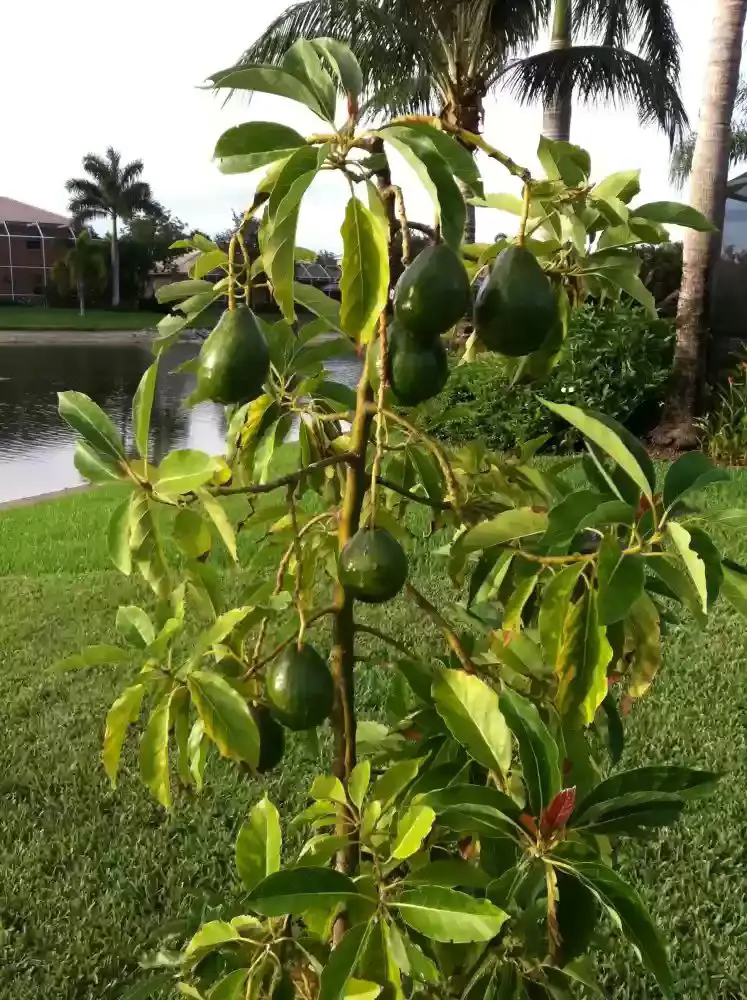
The Avocado tree care requirements include watering, fertilizing, occasional pruning, and more. Neglecting the tree can lead to stunted growth, poor fruit production, susceptibility to diseases and pests, and even death.
Therefore, regular monitoring and timely interventions are essential for ensuring the health and productivity of avocado trees.
Light
Avocado trees thrive in full sunlight, requiring at least 6 to 8 hours of direct sunlight daily for optimal growth and fruit production.
In colder climates where sunlight is limited, supplemental artificial lighting can be provided indoors or in greenhouses to ensure sufficient light levels for the tree. This helps maintain the tree's health and supports its growth, even in colder environments.
Water
These trees require regular and deep watering to surive and grow. Water deeply, allowing the soil to become moist but not waterlogged. In general, provide enough water to keep the soil consistently moist, especially during dry periods.
However, avoid overwatering as it can lead to root rot. Adjust watering frequency based on weather conditions and the tree's specific needs.
Temperature
Avocados thrive in temperatures between 60°F to 85°F (15°C to 30°C). They can tolerate brief dips to 28°F (-2°C) but sustained cold below 32°F (0°C) can damage or kill them.
Likewise, high temperatures above 90°F (32°C) can also stress the tree, affecting growth and fruit development. Optimal temperature conditions ensure healthy growth, flowering, and fruit production in these trees.
Humidity
These trees grow best in moderate humidity levels between 50% to 70%. High humidity can promote fungal diseases, while low humidity can lead to water stress and leaf scorch.
Meanwhile, adequate humidity helps maintain optimal moisture levels in the soil and prevents excessive transpiration.
Soil

The best soil for avocado trees is well-draining and loamy, with a pH level between 6 and 7. It should be rich in organic matter and nutrients, providing good aeration for the roots.
Sandy or sandy loam soils are preferred as they allow excess water to drain away easily, preventing waterlogging.
Fertilization
Avocado trees benefit from a balanced fertilizer, such as a 6-6-6 or 8-3-9 NPK (nitrogen-phosphorus-potassium) formulation. Apply fertilizer three to four times a year, following package instructions, to provide essential nutrients for growth and fruit production.
Avoid excessive nitrogen as it can lead to excessive vegetative growth at the expense of fruiting. Also, don't forget to adjust fertilizer amounts based on soil test results and tree age.
Mulch
These trees should be fed organic mulch, such as wood chips or compost. The mulch is generally applied in a layer around the base of the tree.
Aim for a thickness of 2 to 4 inches, ensuring the mulch doesn't touch the trunk. Mulch helps retain soil moisture, suppress weeds, and add nutrients as it decomposes.
How To Grow Avocado Tree From Seed
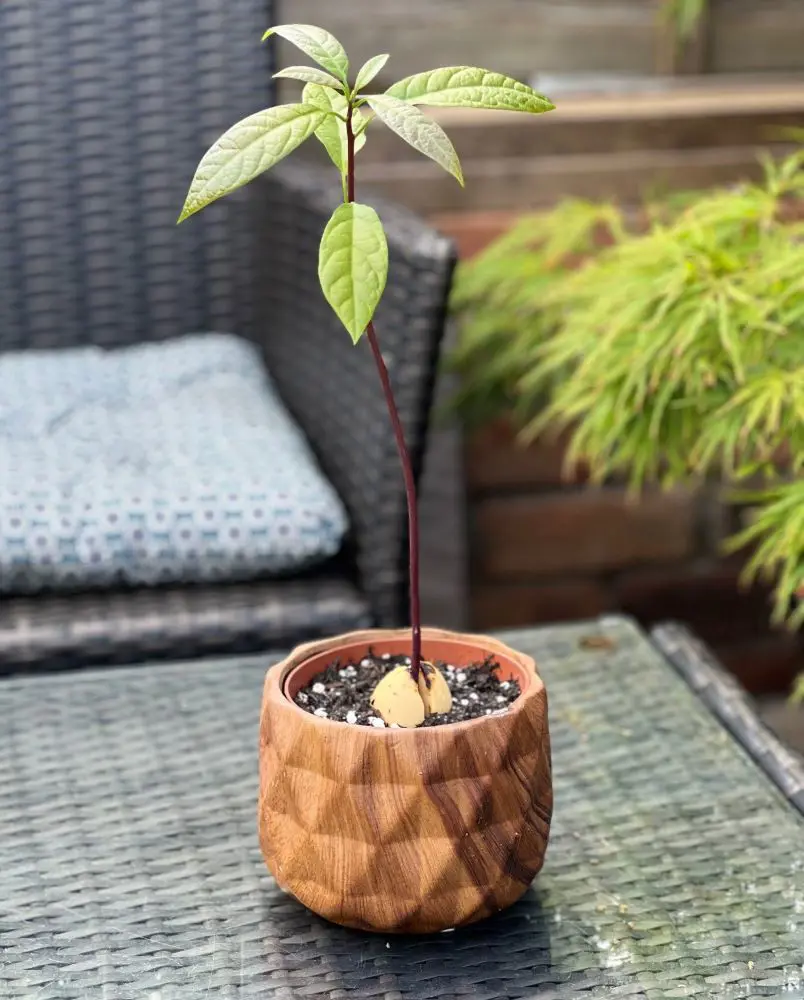
Growing an avocado tree from seeds is not a common practice as the resultant tree rarely grows the same number of fruits as its mother tree. However, it is still practiced by gardeners to keep the tradition of horticulture alive.
Preparation
You'll need to prepare the seed by removing it carefully from the fruit, rinsing off any remaining flesh, and allowing it to dry for a few days.
Once dried, insert toothpicks into the sides of the seed and suspend it in a glass of water with the pointed end facing up. Place the glass in a warm, sunny location, ensuring to change the water regularly.
Growing Steps
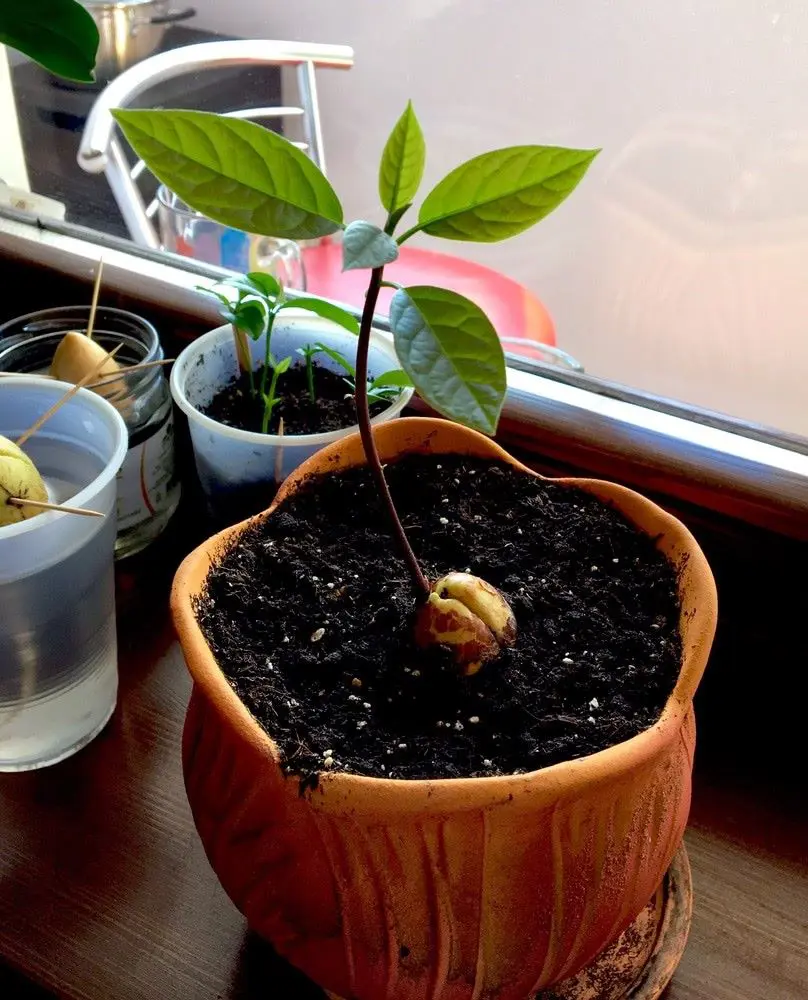
Once the preparation is carried out and the seed is comforably placed in a sunny spot, you can move to the next level. Follow these instructions carefully to successfully germinate the tree from the seed.
- Wait for Roots to Grow: It may take anywhere from 2 to 6 weeks for the avocado seed to sprout roots. Be patient and continue to change the water regularly.
- Transplanting the Seedling: Once the roots are about 2-3 inches long, it's time to transplant the seedling into a pot. Fill a pot with well-draining potting soil and make a small hole in the center.
- Plant the Seedling: Carefully remove the toothpicks from the seed. Place the seed in the hole in the potting soil, with the top half of the seed exposed above the soil surface.
- Water and Care: Water the newly planted seedling thoroughly. Place the pot in a warm, sunny location, and water regularly to keep the soil moist but not waterlogged. Avocado trees thrive in sunlight, so make sure they get plenty of it.
- Pruning and Maintenance: As your avocado tree grows, you may need to prune it to encourage healthy growth and shape the tree. Additionally, regular fertilization with a balanced fertilizer can help support its growth.
- Patience: Growing an avocado tree from seed is a slow process, and it can take several years before it bears fruit. Be patient and enjoy watching your avocado tree grow!
Pruning
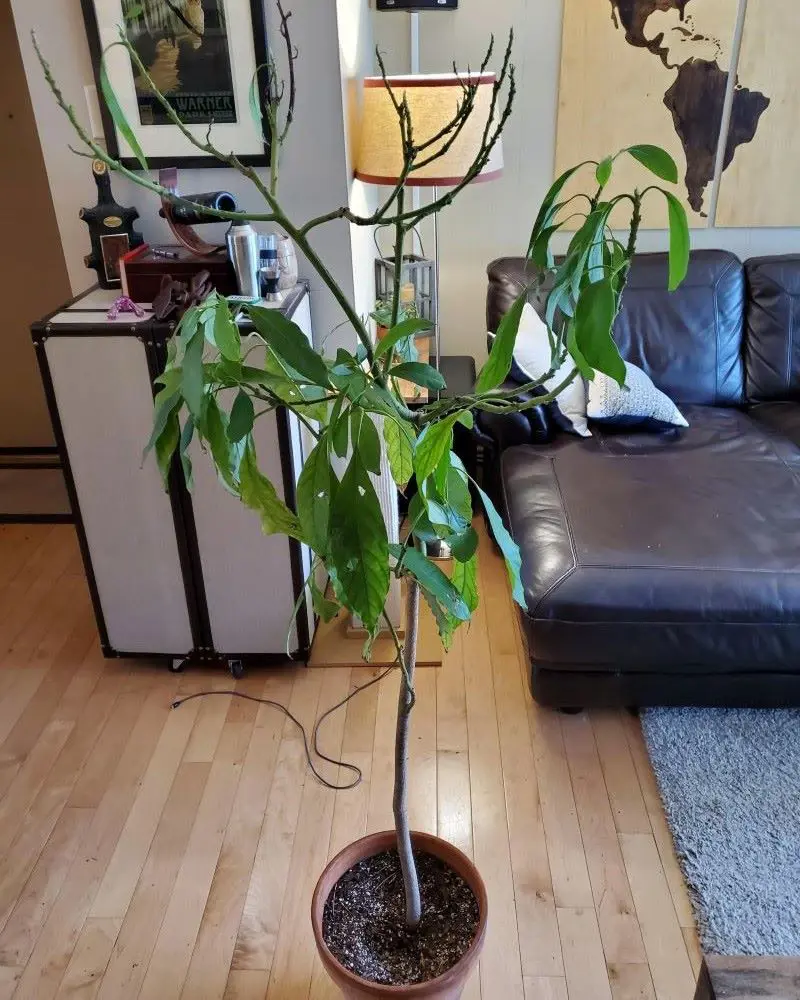
The avocado tree should be pruned annually, ideally in late winter or early spring before new growth begins. Failure to prune may result in overcrowded branches, reduced air circulation, and limited sunlight penetration.
Neglect in pruning will eventually lead to poor fruit production, increased susceptibility to diseases, and overall compromised tree health. Regular pruning promotes better fruit yield and overall tree vigor.
How To Prune
Pruning an avocado tree involves assessing any damaged or diseased branches along with branches that are rubbing against each other. Determine the desired shape and size for the tree. Also, ensure proper timing in late winter or early spring to minimize stress on the tree and promote healthy regrowth.
This step-by-step guide will help you identify the process required for pruning the fruitful tree.
- Assess the Tree: Before pruning, evaluate the tree's overall health. Identify any dead, damaged, or diseased branches.
- Gather Pruning Tools: Equip yourself with clean, sharp pruning shears or loppers, gloves, and safety goggles.
- Choose a Pruning Style: Decide on a pruning style based on your tree's growth habit and your desired outcome, such as open-center or modified central leader.
- Start with Dead or Diseased Branches: Remove any dead, diseased, or damaged branches first, cutting them back to healthy tissue or the trunk.
- Address Crossed Branches: Identify and remove any branches that cross or rub against each other, as they can cause wounds and invite disease.
- Thin Out Overcrowded Areas: Thin out crowded areas to improve air circulation and sunlight penetration, cutting back smaller or weaker branches to favor stronger ones.
- Prune for Shape and Size: Shape the tree by selectively pruning branches to maintain the desired size and structure, focusing on maintaining a balanced canopy.
- Make Clean Cuts: Use sharp pruning tools to make clean, angled cuts just above a bud or lateral branch collar.
- Step Back and Assess: Periodically step back and assess your progress, ensuring a balanced and aesthetically pleasing shape.
- Dispose of Pruned Material: Dispose of pruned branches properly, either by chipping, composting, or disposing of them in yard waste.
- Monitor and Maintain: Regularly monitor the tree's growth and health. Perform maintenance pruning as needed to keep it in optimal condition.
Propagating Avocado Tree

The Avocado tree can be propagated in multiple ways. Choose a method that fits you best by considering factors like available resources, expertise, and desired outcomes.
Propagation By Stem Cutting
Propagating an avocado tree by stem cuttings involves taking healthy stem sections from a mature tree, and planting them in a suitable rooting medium until roots develop.
This method allows for the cloning of specific cultivars and can result in faster fruit production compared to seed propagation. Here's how you should do it:
- Choose a healthy, mature avocado tree as the source. Select semi-hardwood stem cuttings about 6-8 inches long, taken from the tip of a branch, with a few leaves attached.
- Trim the cutting just below a node (where leaves emerge) at a 45-degree angle. Remove any lower leaves, leaving only a few leaves at the top.
- Dip the cut end of each cutting into rooting hormone powder or gel to encourage root development.
- Fill small pots with a well-draining potting mix, such as a mixture of peat moss and perlite or vermiculite.
- Make a hole in the potting mix with a pencil or stick and insert the bottom end of each cutting into the hole. Gently firm the soil around the cutting to hold it in place.
- Water the cuttings thoroughly, ensuring the soil is evenly moist but not waterlogged. Use a misting spray to keep the leaves hydrated.
- Create a humid environment around the cuttings by covering them with a clear plastic bag or placing them in a propagation tray with a transparent lid.
- Keep the cuttings in a warm location with indirect sunlight. Avoid placing them in direct sunlight, as this can cause the cuttings to wilt or dry out.
- Once roots have developed and the cuttings have established themselves (usually after a few weeks to a few months), carefully transplant them into larger pots or directly into the ground in a sunny location.
Propagation By Grafting
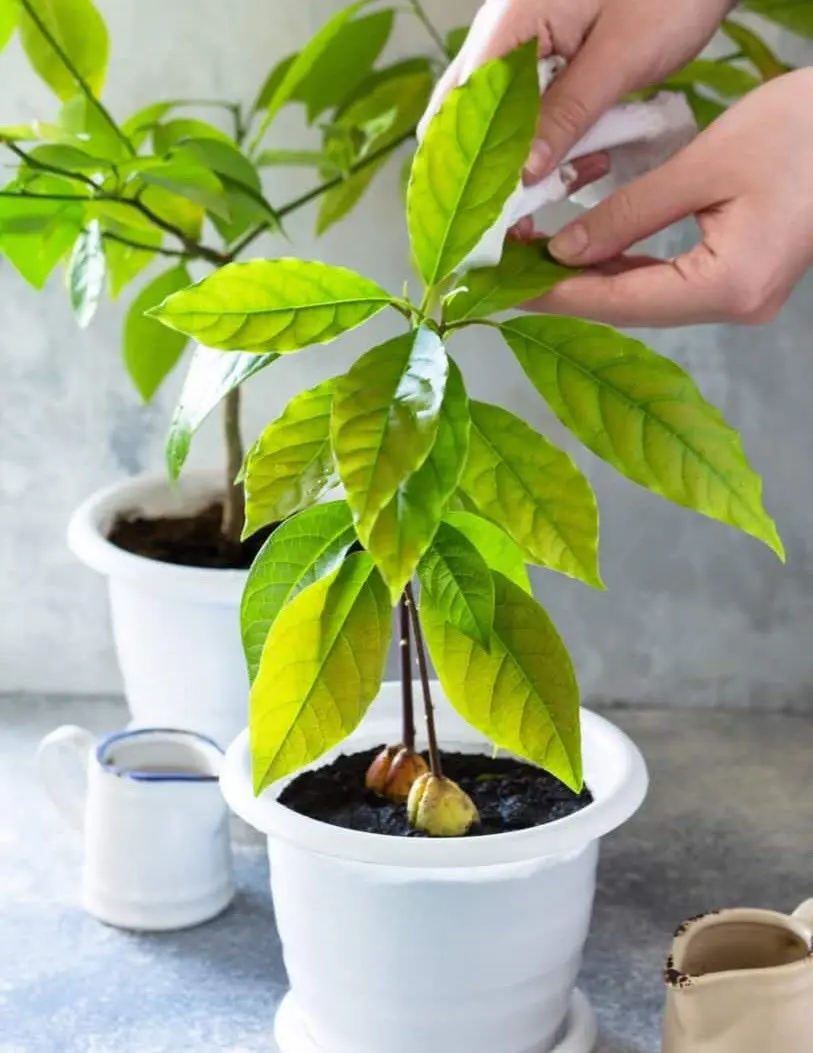
Propagating avocado trees by grafting involves joining a piece of desired avocado cultivar (scion) onto a rootstock. This method ensures that the new tree inherits the desirable traits of the scion, such as fruit quality or disease resistance. The process for this method includes the following steps.
- Choose a healthy avocado rootstock plant suitable for grafting. Common rootstocks include Mexican (cold-hardy) or Guatemalan (disease-resistant).
- Select a healthy scion wood from a desired avocado cultivar with desirable traits such as fruit quality or yield.
- Make a diagonal cut (45 degrees) about 6 inches above the soil line on the rootstock plant. Ensure the cut is clean and straight.
- Make a matching diagonal cut on the scion wood, ensuring it matches the diameter of the rootstock cut.
- Insert the scion into the rootstock cut, ensuring the cambium layers (inner green tissue) align on at least one side.
- Bind the graft union tightly with grafting tape or rubber bands to hold the scion in place and promote healing.
- Apply grafting wax or a sealant to the graft union to prevent moisture loss and infection.
- Stake the newly grafted plant to provide support and prevent movement that could disrupt the graft union.
- Keep the grafted plant in a warm, humid environment with indirect sunlight to promote healing. Water as needed to keep the soil consistently moist.
- Once the graft has healed and new growth has emerged (usually several weeks to months), remove any support structures.
- Transplant the grafted avocado tree into a larger container or the ground once it has established itself and is actively growing.
Avocado Tree Types

Avocado is a widely diverse tree with over 500 types. While varieties like the Hass, Fuerte, and Pinkerton are the common ones, the Pura Vida is one of the rarest types.
1. Haas
The Hass tree, known for its rich, creamy fruit, is one of the most popular avocado varieties globally. Originating from California, it features a dark, pebbly skin and a buttery texture.
Hass avocados thrive in subtropical climates, requiring well-draining soil and adequate sunlight. This variety is prized for its high oil content, making it ideal for guacamole, salads, and various culinary dishes.
2. Pinkerton
The Pinkerton is a hybrid variety of the avocado tree. It is popular for its smooth, green skin and elongated pear-like shape.
Additionally, the type produces medium to large-sized fruits with a rich, nutty flavor and creamy texture. Pinkerton avocados are favored for their high oil content and resistance to browning, making them ideal for salads, sandwiches, and spreads. These trees require well-draining soil and thrive in warm, subtropical climates with adequate sunlight.
3. Fuerte
The Fuerte tree is esteemed for its smooth, thin skin, pear-like shape, and vibrant green color. Originating from Mexico, it bears medium to large-sized fruits with a mild, nutty flavor.
These avocados are adored for their versatility in culinary applications, from slicing onto sandwiches to blending into smoothies. These trees flourish in subtropical climates, requiring well-draining soil and ample sunlight for optimal growth.
Common Pests And Diseases

The avocado tree is vulnerable to different plant pests and diseases that can significantly damage its well-being and even shorten their lives. Common pests that can attack the tree include caterpillars, lace bugs, and borers. Similarly, the tree is also at-risk of diseases like root rot, sun blotch, cankers, and more.
Caterpillars
Caterpillars can harm avocado trees by devouring leaves. This reduces the tree's ability to photosynthesize, weakens its overall health, and diminishes fruit yield.
Solution: Implement integrated pest management strategies such as introducing natural predators like parasitic wasps, applying organic insecticides sparingly, and manually removing caterpillars. Maintain a balanced ecosystem to reduce caterpillar populations naturally without harming beneficial insects.
Borers
Borers are insect larvae that tunnel into the wood of avocado trees, causing damage to the trunk and branches. Their feeding activity weakens the tree's structural integrity, leading to wilting, dieback, and ultimately death if left untreated.
Solution: Prune and remove affected branches and apply insecticides targeting borers. Also, maintain tree health through proper irrigation, fertilization, and cultural practices.
Sun Blotch
Sun blotch is caused by prolonged exposure to intense sunlight, leading to sunburn on the fruit's skin. This condition results in discolored patches and a rough, leathery texture, reducing fruit quality and marketability.
Solution: Provide adequate shade with tree canopies. Use reflective mulches, and apply whitewash to tree trunks and branches. Pruning to improve air circulation can also mitigate sunburn risk.
Canker
Canker disease in avocado trees is caused by fungal pathogens that infect the tree's bark and wood. This disease weakens the tree, causing branch dieback, leaf drop, and fruit deformities.
Solution: Prune infected branches, apply fungicides, and improve tree vigor with proper irrigation fertilization. Practice good sanitation by removing and disposing of infected plant material.
Recent posts
How To Grow
How To Grow
How To Grow Garlic
A bulbous member of the onion family, garlic is prized for both its potent flavor and a variety of therapeutic applications. Due to its relative ease of cultivation, it is a favorite among home gardeners and a pioneer in kitchens worldwide. Garlic ma...
How To Grow
How To Plant and Grow Orchids
Orchids are one of the prettiest and most interesting flowers out there, with over 30,000 types and 200,000 hybrids. They are one of the biggest families of plants and can grow indoors or outdoors. However, growing and taking care of orchids is not e...
How To Grow
How To Plant, Grow And Harvest Corn All By Yourself
Growing your popcorn or sweet corn at home garden can seem like an interesting idea. However, it requires a large amount of space to grow as it is a tall plant that needs plenty of room to spread out. But, if you want to enjoy freshly popped po...
How To Grow
How To Plant, Grow And Care Cucumbers
Growing cucumbers is like going on a fun journey where you get to plant and pick your very own crunchy veggies. It's not just about having tasty cucumbers, it's also about the joy of seeing your plants grow. Whether you have a big garden or a small b...
How To Grow
How To Plant, Grow And Care Radishes In Your Garden
Growing radishes in your garden is a fantastic way to enjoy crisp and peppery veggies that you've nurtured from seed to plate. It's a straightforward process that anyone can try, even if you're new to gardening. In the following 12 steps, we'll guide...
How To Grow
How to Plant, Grow And Care For Spinach?
Growing leafy greens in your backyard garden is both healthy and fun. Spinach can be the best leafy green to start with as it is relatively easy to grow from scratch and can be harvested in about a month from planting. It thrives in spring or fall in...
